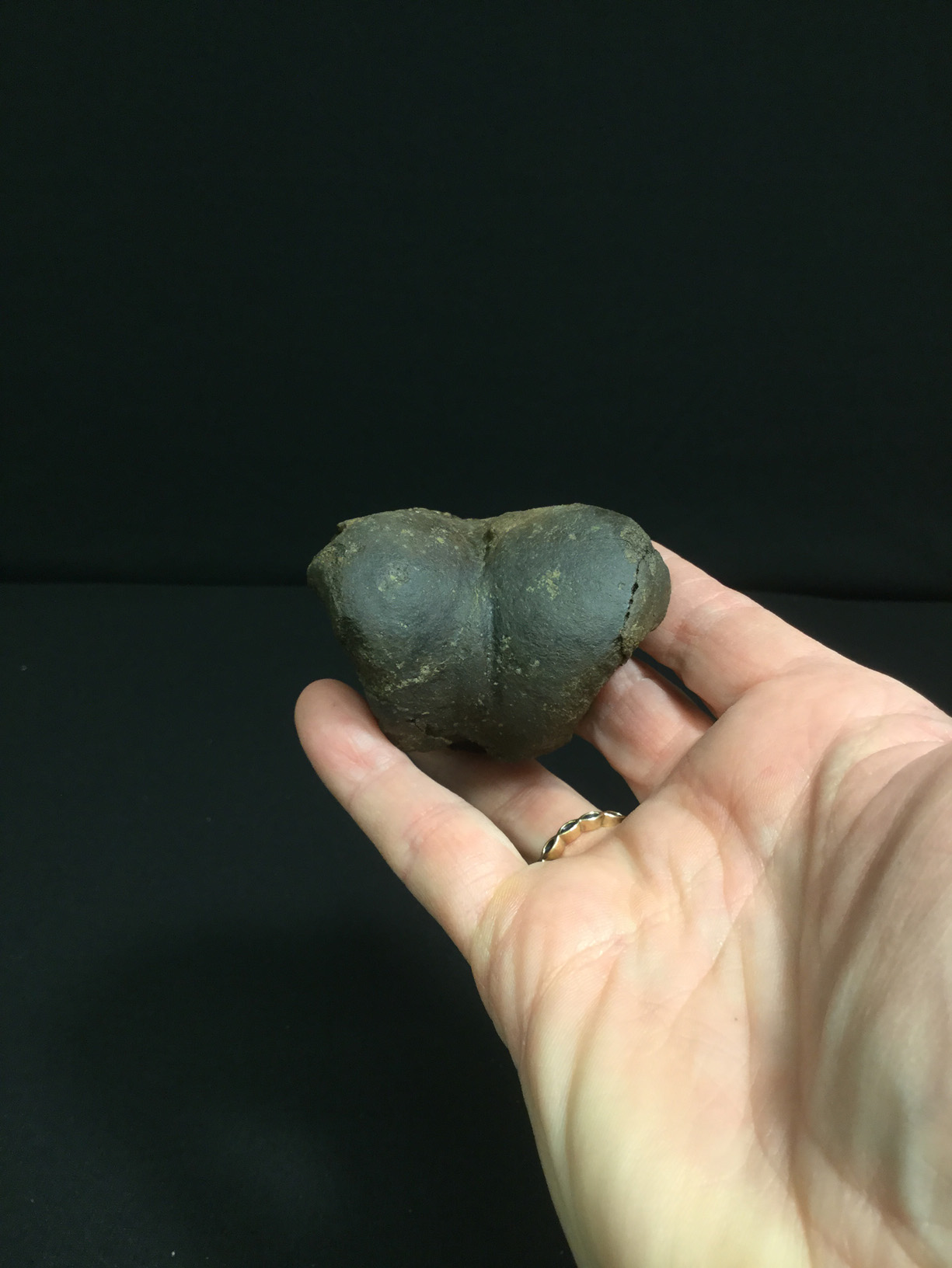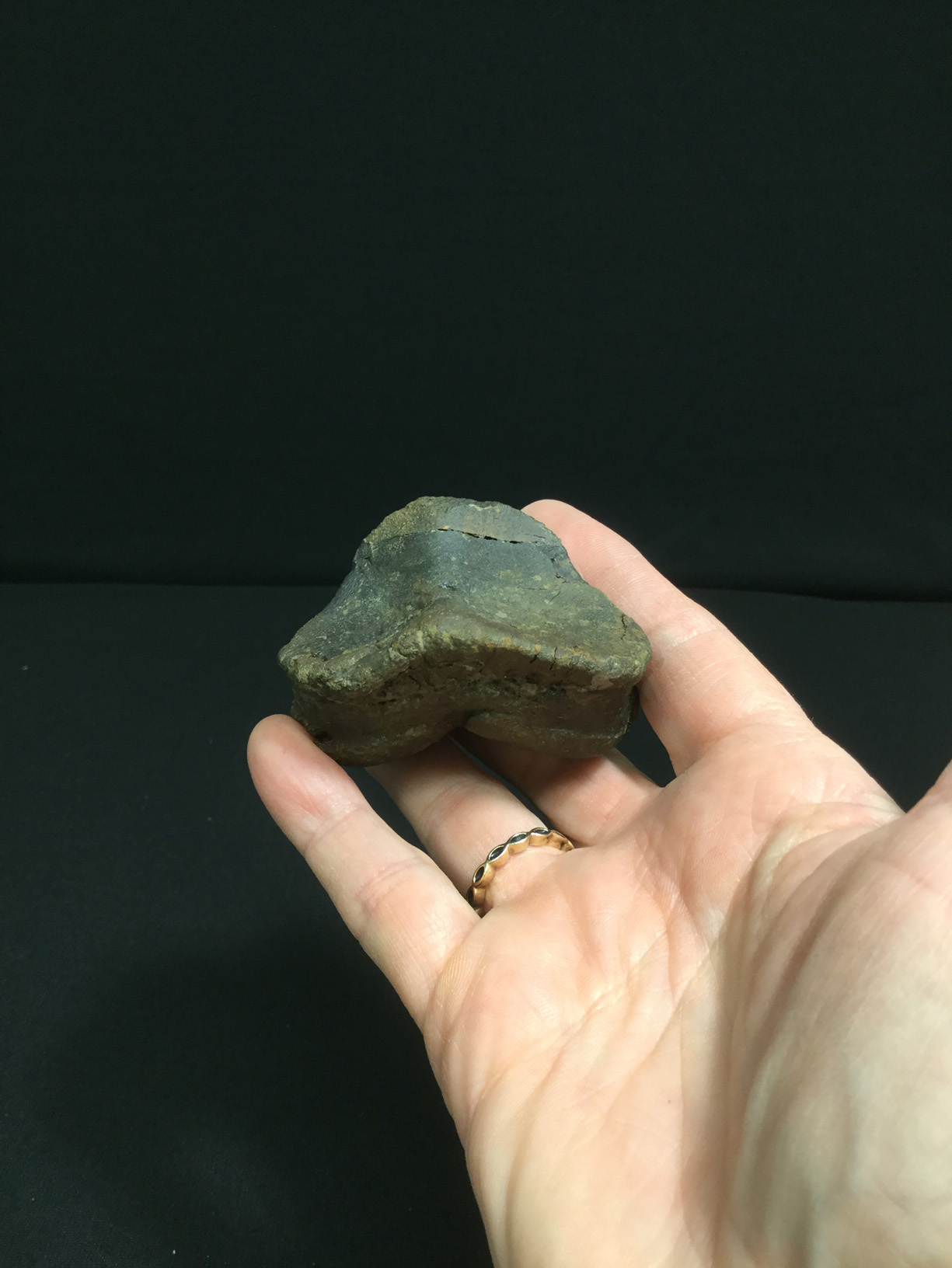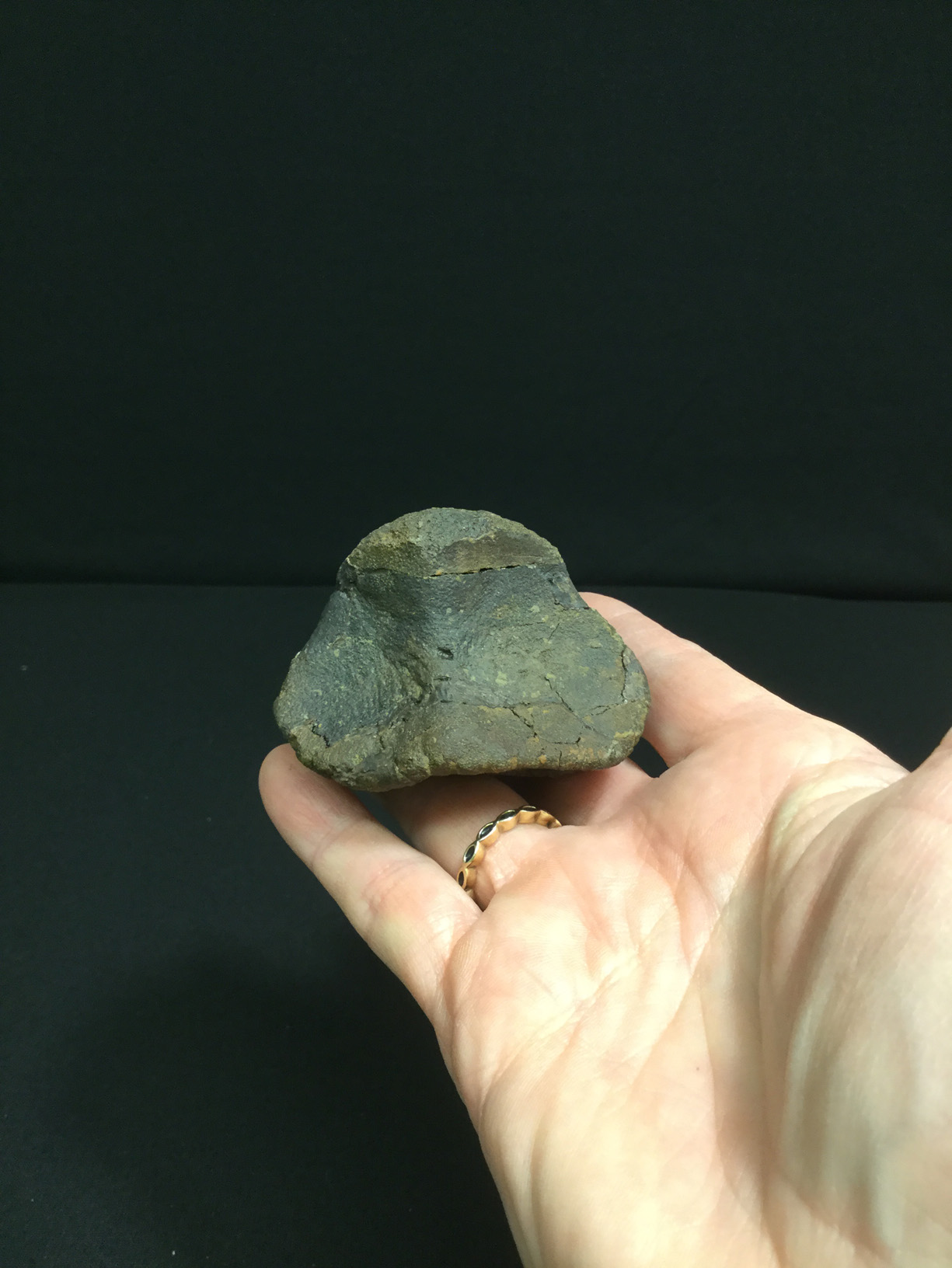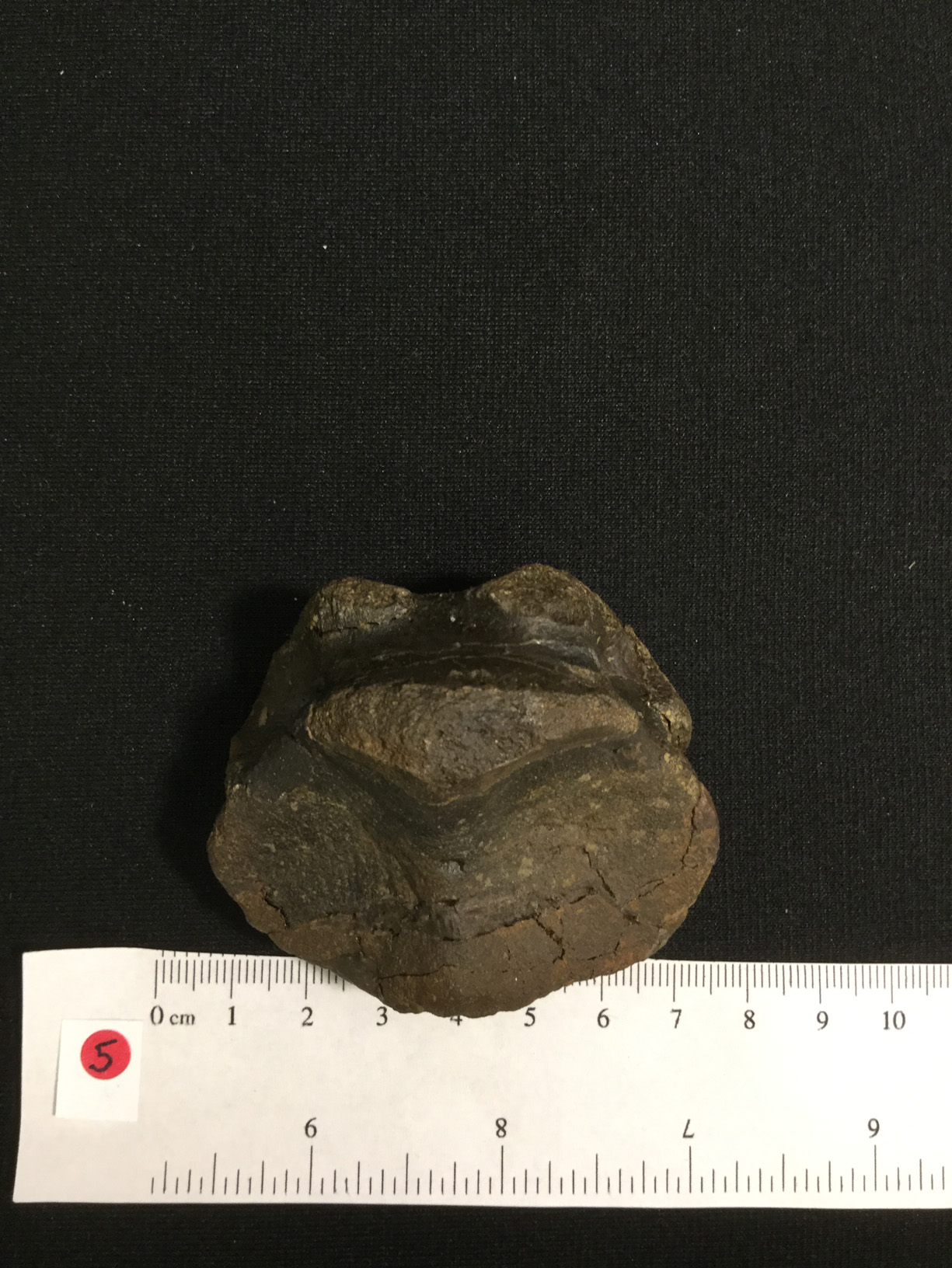

Jurassic Morrison Allosaurus Foot Bone
Sorry, this item is no longer for sale
Allosaurus sp.
Morrison Formation
Upper Jurassic
Moffat County, Colorado
Morrison Formation
Upper Jurassic
Moffat County, Colorado
This example is a bone from the distal portion of an Allosaurus foot. The bone is a phalange from the left pes probably digit 4. This specimen has minor restoration and is of very good quality.
Allosaurus was a large bipedal predator. Its skull was large and equipped with dozens of sharp, serrated teeth. It averaged 8.5 m (28 ft) in length, though fragmentary remains suggest it could have reached over 12 m (39 ft). Relative to the large and powerful hind limbs, its three-fingered forelimbs were small, and the body was balanced by a long and heavily muscled tail. It is classified as an allosaurid, a type of carnosaurian theropod dinosaur. The genus has a complicated taxonomy, and includes an uncertain number of valid species, the best known of which is A. fragilis. The bulk of Allosaurus remains have come from North America's Morrison Formation, with material also known from Portugal and possibly Tanzania. It was known for over half of the 20th century as Antrodemus, but study of the copious remains from the Cleveland-Lloyd Dinosaur Quarry brought the name Allosaurus back to prominence, and established it as one of the best-known dinosaurs.
As the most abundant large predator in the Morrison Formation, Allosaurus was at the top of the food chain, probably preying on contemporaneous large herbivorous dinosaurs and perhaps even other predators. Potential prey included ornithopods, stegosaurids, and sauropods. Some paleontologists interpret Allosaurus as having had cooperative social behavior, and hunting in packs, while others believe individuals may have been aggressive toward each other, and that congregations of this genus are the result of lone individuals feeding on the same carcasses. It may have attacked large prey by ambush, using its upper jaw like a hatchet.
Allosaurus was a large bipedal predator. Its skull was large and equipped with dozens of sharp, serrated teeth. It averaged 8.5 m (28 ft) in length, though fragmentary remains suggest it could have reached over 12 m (39 ft). Relative to the large and powerful hind limbs, its three-fingered forelimbs were small, and the body was balanced by a long and heavily muscled tail. It is classified as an allosaurid, a type of carnosaurian theropod dinosaur. The genus has a complicated taxonomy, and includes an uncertain number of valid species, the best known of which is A. fragilis. The bulk of Allosaurus remains have come from North America's Morrison Formation, with material also known from Portugal and possibly Tanzania. It was known for over half of the 20th century as Antrodemus, but study of the copious remains from the Cleveland-Lloyd Dinosaur Quarry brought the name Allosaurus back to prominence, and established it as one of the best-known dinosaurs.
As the most abundant large predator in the Morrison Formation, Allosaurus was at the top of the food chain, probably preying on contemporaneous large herbivorous dinosaurs and perhaps even other predators. Potential prey included ornithopods, stegosaurids, and sauropods. Some paleontologists interpret Allosaurus as having had cooperative social behavior, and hunting in packs, while others believe individuals may have been aggressive toward each other, and that congregations of this genus are the result of lone individuals feeding on the same carcasses. It may have attacked large prey by ambush, using its upper jaw like a hatchet.










